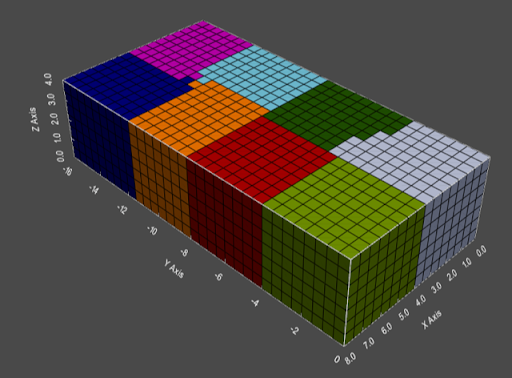Improving tools to model seismic wave behaviour and predict earthquake impacts
The below case study shares some of the technical details and outcomes of the scientific and HPC-focused programming support provided to a research project through NeSI’s Consultancy Service.
This service supports projects across a range of domains, with an aim to lift researchers’ productivity, efficiency, and skills in research computing. If you are interested to learn more or apply for Consultancy support, visit our Consultancy Service page.
Research background
Earthquakes can be a big problem – the magnitude 7.0 earthquake that struck Haiti in 2010 is a testimony of the destructive power of earthquakes. By some estimates, between 92,000 and 316,00 people perished and altogether three million people were affected by the event. Vital infrastructure such as roads, hospitals and communication systems were severely damaged.
At the University of Canterbury, researchers Maxim Millen and Chris McGann are developing numerical tools to estimate earthquake risks to buildings and infrastructure. These tools simulate how seismic waves travel and can predict the behaviour of buildings and infrastructure to intense ground motion, including in the case where there is liquefaction.
Project challenges
Modelling and quantifying building-foundation-soil deformations under earthquake loading considering the variation in soil and foundation properties requires a large number of simulations, each taking days to run. Hence, there is a need for optimising both OpenSees execution and the workflow controlling the thousands of simulations on NeSI's HPC platform.
What was done
NeSI Research Software Engineers Alexander Pletzer and Chris Scott helped Maxim and Chris compile a Python callable, parallel version of the finite element OpenSees framework, which simulates the performance of structural and geotechnical systems under earthquakes. As part of the compilation, make available the recently released Explicit Difference “Leap-frog” solution for solving large nonlinear problems.
Main outcomes
A 10-30X speedup depending on problem size.
Researcher feedback
"It’s remarkable. Simulations used to take 24 hours, now I get results back in 2 hours. It has changed the way I work."
- Dr Maxim Millen, Department of Civil and Natural Resources Engineering, University of Canterbury
Do you have a research project that could benefit from working with NeSI Research Software Engineers or our Data Science Engineer? Learn more about what kind of support they can offer and get in touch by emailing support@nesi.org.nz.







